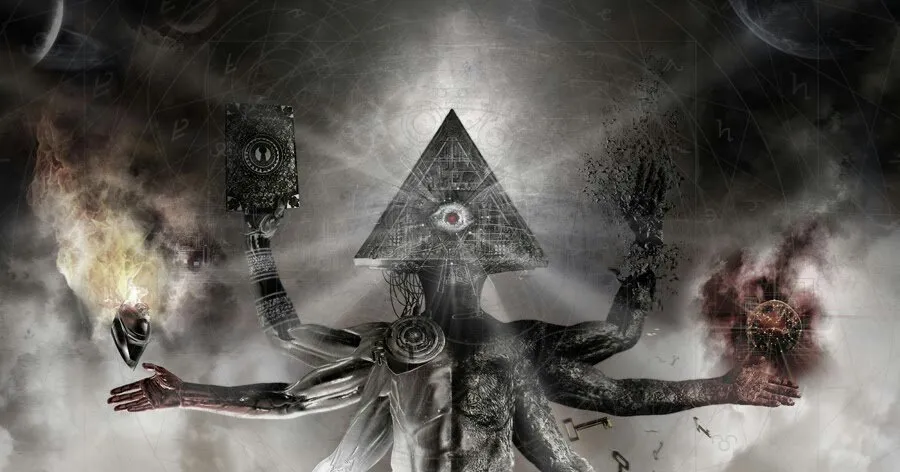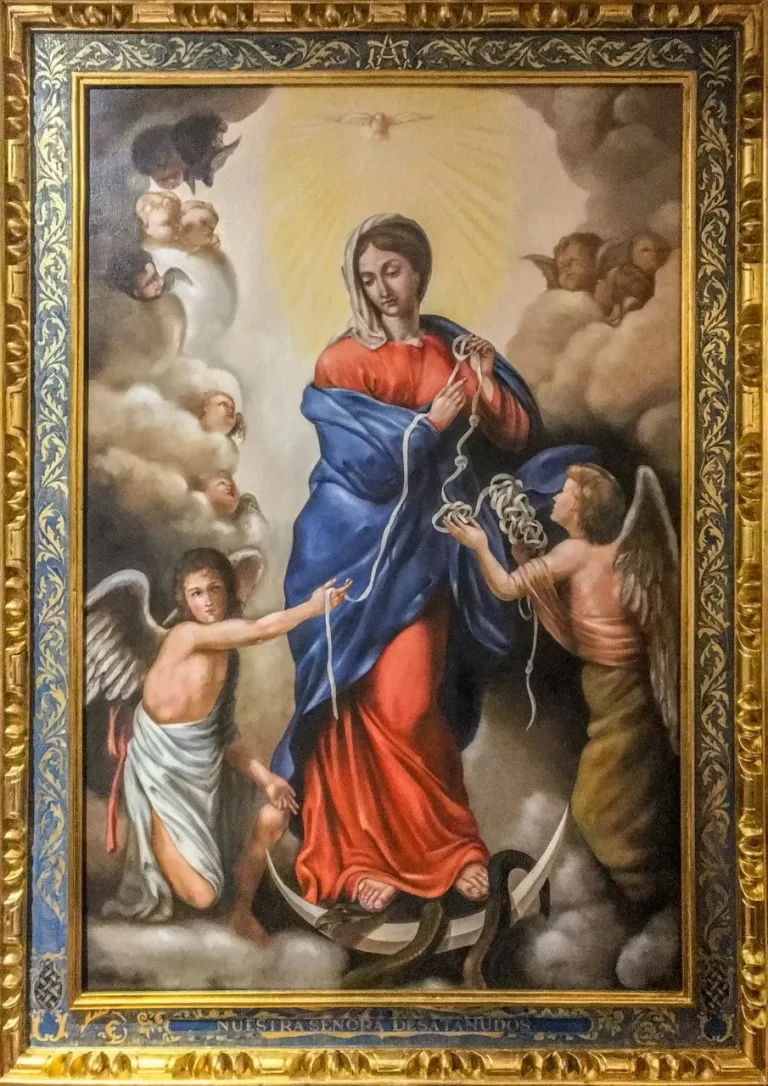Gnosticism: History of Christianity
In order to understand what Christianity is today, it is necessary to know its roots. For this reason today we are going to talk about Gnosticism. What is? How is it related to Christianity and how does it influence it? What are their characteristics? Well, we invite you to continue reading to discover the answers to these and many other questions about Gnosticism .
What is Gnosticism?
The word Gnosticism comes from the Greek “Γνωστηκισμóς” and has the meaning of “gnostikismós”; being a compound word of the term “Gnosis” which means knowledge. But what is particular about this gnosis is that it alludes to a different type of knowledge, one that is acquired through a special state of consciousness. A kind of deep intuition, which allows the person to know what is beyond the senses and rational thought. Therefore, this knowledge is inaccessible through analysis or common knowledge, nor by the use of the intellect. We can only be able to attain it through experience.
Taking into account where the word comes from, we can define Gnosticism as a mysticism oriented to the salvation of people through the set or union of the beliefs of Greek philosophy that are derived mainly from Plato with orientalist beliefs. This union generates a dualistic belief that has between its poles good and evil, spirit vs. matter, the creator of the world vs. the supreme being and the best known of all; the spirit before the body. Let us remember that Plato is the father of dualistic philosophy (mind vs. body) and in his teachings he speaks of the existence of two opposite worlds, the sensible world or ideas and the material world.
In any case, returning to the subject of Gnosticism. It happens that it is not only a philosophical current that arises during that period, but also interacts and feeds back with some religious currents of the time such as Christianity. The latter occurs during the first three centuries of our era. Although later; the practices of this branch are considered heresy despite the fact that they have a certain prestige among many Christian intellectuals.
This causes a division into several aspects of Gnosticism, although in general they are categorized as one pagan and one Christian. In any case, the current that was most significant from the Gnostic point of view was the heterodox branch of early Christianity. Those who thought that those who are initiated are not able to achieve forgiveness through the sacrifice made by Jesus on the cross, but through gnosis (a kind of knowledge that is acquired by divine introspection which cannot be accessed only with faith). This means that the death of Christ on the cross is not enough to purify our souls from the sins committed, but we must find salvation by our own means.
But, who are the Gnostics ? they are those initiates who consider this religion as the highest or supreme form of knowledge. On the other hand, it can be compared as a religious version of Socrates’ maieutics. Although we also find traces of its influence in Manichaeism.
Characteristics of Gnosticism
One of the main problems to determine what the characteristics of the Gnostic currents were, are the multiple aspects that emerged over the years. But in any case, we will focus on the aspects they had in common as well as on Christian Gnosticism that stands as the representative of its purest tradition, being pagan in its roots:
- Undoubtedly, one of its main characteristics lies in its ability to initiate or shape religious currents that would come later, although this was usually promoted or revealed to a small elite of initiates who were told that they would know the secrets of Christ the “anointed”. For this reason, many Christian Gnostics said that they built special witnesses of Christ with the ability to reach divine knowledge through gnosis (the transcendental truths using introspection that we mentioned in the previous section).
- This gnosis was the only way to achieve salvation. That did not imply that one could not live according to the teachings of Christ, but this was relegated to a secondary aspect.
- As mentioned in the previous section, Gnosticism is dualistic. So a clear distinction is made between matter and spirit. Everything we know as darkness, evil, perdition or evil is related to matter, while its counterpart; good and salvation belong to the spiritual. This is the reason why the human being was unable to achieve salvation through matter and body. The only way was through the consciousness of the spirit that possesses a divine character. This particular introspection, which reaches the point of being almost empirical, is what is known as gnosis, which is defined as an internal experience of the spirit. This point is of course the direct influence of Platonic philosophy.
- Other characteristics that we encompass as one are the different teachings and particular beliefs about divinity. Some of them are:
- Every spirit is divine, this includes the spiritual part of man that must be saved by its own means, although it took the arrival of Christ for this truth to be revealed.
- There is a creator and organizer of matter who is known as “Demiurge.” But this being goes to the path of darkness when he decides to multiply matter with his work because he goes against the principles of the true supreme being where he came from.
- Due to the many currents that emerged, there was a great variety of ethical conclusions which differed a lot from each other:
- Some were inclined to the idea that the path of matter led to damnation. For this reason, it was necessary to practice physical punishment and martyrdom of the body. Since only by the suffering of the flesh could one contribute to the salvation of the spirit. This promoted his followers to lead an asceptic life (the denial of material pleasures and the use of abstinence).
- Other currents favored the argument that if salvation can only be achieved through the gnosis of the soul, what is done with the body is irrelevant. Devaluing the moral ties related to the different types of enjoyment.
- Some do not accept the multiplication of matter, condemning procreation.
- We also find some positions strongly governed by Platonism and Eastern philosophies. So they believed in the cyclical return of souls to be prisoners of matter through reincarnation. In this way, all those who are initiated seek to break this repetitive cycle using gnosis.
- An allegorical (symbolic) interpretation of Christianity and the scriptures is given. This allows reinterpreting what is known about the creation stories according to the Gnostic, impregnating them with philosophical meanings.
- There is an establishment of spiritual hierarchies where God is at the head, which corresponds to the perfect and immanent entity that, due to this status, does not have a relationship with the rest of the imperfect creatures. thus being inaccessible. In the next step we find the beings emanated from the Demiurge, antithesis and culmination; that they are responsible for the degeneration of spirits and being the cause of evil. This is how the dualistic struggle between good and evil occurs.
- There is also an establishment of human hierarchies. At the top we can find the initiates where the spirit predominates, since this minority group has the ability to experience gnosis and thus find salvation. Then there are the rest of the uninitiated where what predominates is the sensitive soul, their only possibility of achieving salvation is by following the steps and teachings of the initiates. Lastly, we have those where what predominates is the body and therefore, they walk the path of darkness that will make it impossible for them to achieve salvation.
- They carry out a particular Christology. Namely; an analysis and deductions from the life and teachings of Christ in a unique and singular way. If matter corresponds to the anchor point and beginning of evil in the world, it is not possible that Jesus was capable of being divine while being related to his material body at the same time. Since the latter has the property of contaminating it. This is how the doctrine of the “Apparent Body of Christ” is created, where it is specified that his divinity has nothing to do with his flesh, rather it was shown to men by his spirit enclosed in that apparent material body. This is known as “Docetism.”
In addition to docetism, there is adoptionism, which indicates that Jesus was a normal, ordinary person who at the time of his ministry was adopted by a divine force.
Despite all these characteristics mentioned, more contemporary authors such as Culdaut highlight three in particular, saying that they are the cornerstone of any current of Gnosticism:
- Having to employ gnosis beyond belief is a revelation and cannot be accessed through reason or reality.
- Use dualism throughout the doctrine of Gnosticism. Matter vs spirit, body-mind, etc.
- The use of mythological stories to explain the above points and other characteristics of gnosis. These stories allow us to understand what the “I” is, its origin and where you should go. In addition to teaching what is the path that you must travel in order to achieve the salvation of the spirit and to be able to overcome evil. These accounts may predate the 1st and 2nd centuries in the Greek myths of Homer.
Roots of Gnosticism
The development of Gnosticism as a doctrine is pigeonholed during the end of the 1st century to the 4th century, a time period in which the foundations of Christianity were also being laid. Although the text of Eugnostus the Blessed is considered to have been written before the appearance of Jesus of Nazareth.
Many Christians claim that one of the earliest roots lies with Simon Mango, who is mentioned in a New Testament account of the apostles. Even so, the most significant figure for this current is Valentine of Alexandria, responsible for spreading an intellectualizing Gnostic doctrine in Rome. It was in this city that he would come to the attention of the church-going public, holding high-ranking positions to the point of being considered for the position of bishop in Rome.
Another figure of importance to Gnostic doctrine was Paul of Samosata. Who is responsible for carrying out a heresy that became well known for relating Christ to nature. On the other hand, Carpocrates is the author of the notion of moral freedom while in practice there is an absence of moral rules.
As time went by and new slopes and ramifications of Gnosticism were generated, together with the increase in moral variation, it began to be viewed with increasing suspicion, reaching its climax in the year 180 AD when Bishop Irenaeus of Lyon declares it heresy. Opinion that already dominated the opinion circles of the Catholic Church.
Current Gnosticism
One of the main difficulties in obtaining a clear understanding of how this philosophy works is the few written records on the subject, most of which are a compendium of citations, refutations, heresiologies and apologies made by different figures of the Catholic Church. Although this changed a bit in the year 1945 when a library containing a large number of Gnostic manuscripts was discovered in Egypt at Nag Hammadi.
Current Gnosticism is also known as neognosticism, but it does not refer to a single specific religion, but to different religious movements that have derived from the Hellenistic society around the Mediterranean. During the 19th century, some recently discovered popular text-based studies were made and published. At the same time, he began to see a rise of the Gnostic religious movement in France, thanks to the aforementioned Nag Hammadi library.
Although this movement was widely suppressed and driven into exile, it was never extinguished, becoming an important forerunner in Christianity, influencing Christian doctrines and accidental thought.
Additional Aspects
- Some authors and under certain contexts use the word gnosis as a synonym for Gnosticism or Gnosticism. But we must not forget that gnosis refers to authentic Christianity and means a particular type of knowledge, while Gnostic refers to members of a religious sect and Gnosticism is a doctrine, that is; a set of beliefs and ideas.
- Culdaut credits the historian Baur FC as the founder of gnosis research for the 17th century. Who also does not refer to Gnosticism as a heresy but as an additional religion that combines pagan traditions with the ideas of Christianity.
If the information you have found here has been useful to you, then you may also be interested in reading:

Hello! Let me enthusiastically introduce myself as a dedicated blogger fueled by an intense passion for meticulously crafting insightful and well-researched blogs. My mission revolves around providing you, dear readers, with a veritable treasure trove of invaluable information.







